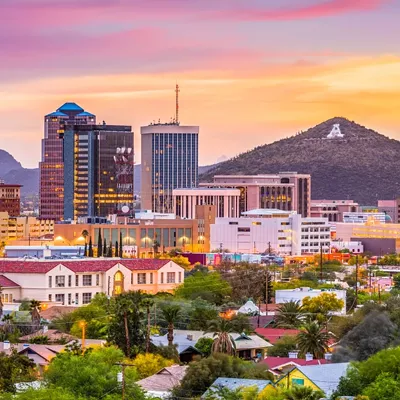Or, in the case of Tucson Water, sort of grateful: As the Arizona Daily Star reported recently, the utility's revenue was down $1.4 million for July from last year because people didn't water their yards much. No silver lining without a cloud, you see.
Utilities don't really want their customers to conserve. Why would they? Their product is water, and they want to sell more of it, like any other business. What Tucson Water does want is to reduce peak demand, to get people to use water at the same, predictable rate year-round, so they can maximize return on existing investment without having to build new infrastructure. (Same goes for energy utilities. If Tucson Electric Power could somehow talk us all into running our dishwashers, TVs and clothes dryers from midnight to 6 a.m., they'd be ecstatic.)
The next time you're confused by the mystifying doubletalk from the spinmeisters at Tucson Water--"Oh, people are watering more (or less) this month because there's a perception that there's less (or more) rainfall and therefore a perception that there's more (or less) need to irrigate"--just realize that they're trying to mesmerize you into doing the same thing every day for the benefit of their investors. Your inexpert homeowner feeling that the trees in your yard will die if they don't get a drink for six months remains absolutely correct.
The desert, a dead and sorrowful place this spring, has been making up for lost time, fueled by the perception that ambient moisture is up, and life is good. The creosote bushes that were brown in May have greened up and raced through bud, flower and seed-setting in record time. Other flexible and opportunistic species, like the desert marigold and night-blooming cereus in my front yard, have taken advantage of the Congo-like moisture and warmth to run double-quick through another cycle of bloom. Even a big old sober barrel near the front walk, swollen with rainwater to a near-sphere, has decided to throw out another flower in the center of a ring of nearly ripe fruit. All of nature is out there this month saying, "Ah, what the hell?"
A metallic green June bug, two months behind schedule and in a hurry to reproduce, ran into me the other day as it careened through the steaming afternoon air, no doubt looking for sex. June bugs are favorites of mine, and I'd missed them earlier in the year. Even though this one was late, and alone, it was a relief to collide with him. And then there are the carpenter bees, dragonflies, butterflies and moths that have burst forth from the transformed landscape and are rushing to get their business done before the dry heat returns or winter overtakes them. It feels good to have the world populated again.
The squeaking, militant hummingbirds have also been making hay while the rain falls. A couple of weeks ago, while everything was still dripping from a big afternoon rain, I caught sight of the male hummer who relentlessly polices a stretch of our neighborhood wash behaving oddly. He was hovering around the small mesquite where he perches, flashing his tail and bobbing in the air in front of a demure female who'd come to visit. Even for a hummer, this one is aggressive, and his softer side came as a revelation. No doubt there's a new clutch of pea-sized eggs somewhere in the neighborhood as the result of these minute but vivid amours.
Of course, one monsoon can't break the drought, and thousands of less-adaptable species couldn't reproduce this spring. If the winter rains, always less dependable here than the monsoon, continue to fail, the desert will continue to evolve away from the lush and varied biome we love. Most of our tender, evanescent desert annuals bloom in the spring, and depend on the winter rains--no more winter rainfall means no more big wildflower shows, just for starters. It also means more buffelgrass squeezing out the native plants: Travis Bean out at Tumamoc Hill says that while eradication efforts have finally gotten fully underway this summer, it's also been a banner year for buffelgrass seedlings. Time for everybody to get spraying while the grass is green, and digging while the ground is soft.
The same goes for the infernal Bermuda grass that's flourishing knee-deep and allergenic along ditches and in vacant lots and untended yards all over town. Now's the time to kill the damn stuff and make a bit more room for the colorful natives.
And it's never too soon to start praying for winter rain.






